History and Biblical SignificanceSmyrna was a coastal city in what is today western Turkey. It is best known to readers of The Bible as the location of one of The Seven Churches of Revelation, each of which was given a personal message from God, through Jesus Christ, delivered by the apostle John (Revelation 1:1, 2:1-29, 3:1-22). Smyrna was long a pro-Roman city, serving as a regional center for worship of the "divine" Roman emperor. It was the site of the temple to Tiberius, who reigned at the time of the crucifixion of Jesus Christ. This ancient form of human idolatry is prophesied to occur yet again, on a worldwide scale, prior to The Return Of Jesus Christ. Despite the pagan environment, Christians in Smyrna were true and faithful. Of the seven churches addressed by The Lord, only Smyrna and Philadelphia were spoken of with approval. In later years, Polycarp, a student of the apostle John, served as a leader of the church at Smyrna, and he was martyred there, burned at the stake, about 155 A.D. The Message To Smyrna "And to the angel of the church in Smyrna write: 'The words of the first and the last, who died and came to life. "I know your tribulation and your poverty (but you are rich) and the slander of those who say that they are Jews and are not, but are a synagogue of Satan [see That Old Serpent, What Does Satan Look Like?, Did God Create The Devil? and Could Satan Repent?]. Do not fear what you are about to suffer. Behold, the devil is about to throw some of you into prison, that you may be tested, and for ten days you will have tribulation. Be faithful unto death, and I will give you the crown of life.' 'He who has an ear, let him hear what The Spirit says to the churches. He who conquers shall not be hurt by the second death." (Revelation 2:8-11 RSV) |
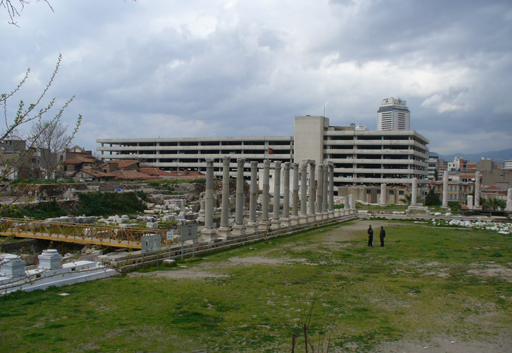 In the middle of the city of Smyrna (Izmir) we saw this agora with the pillars of a stoa at the side.
In the middle of the city of Smyrna (Izmir) we saw this agora with the pillars of a stoa at the side.
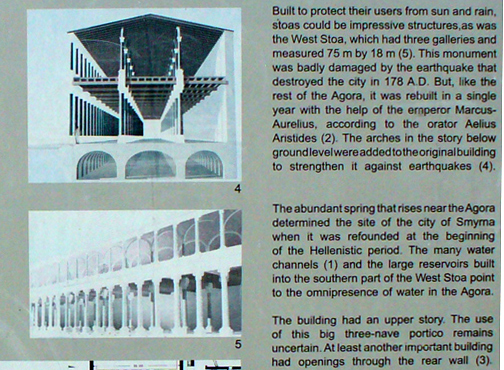 A sign there told the story of the stoa and showed a diagram.
A sign there told the story of the stoa and showed a diagram.
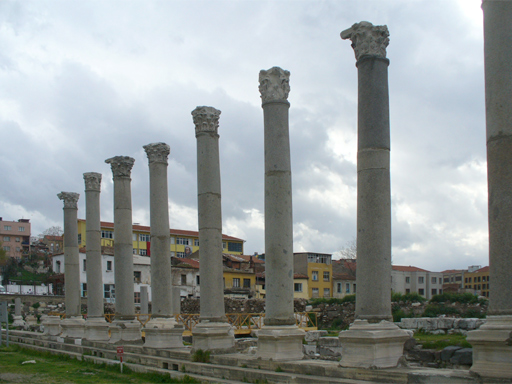 Here are some of the pillars which stand today.
Here are some of the pillars which stand today.
 We could also see some of the arches of the galleries below which supported the structure.
We could also see some of the arches of the galleries below which supported the structure.
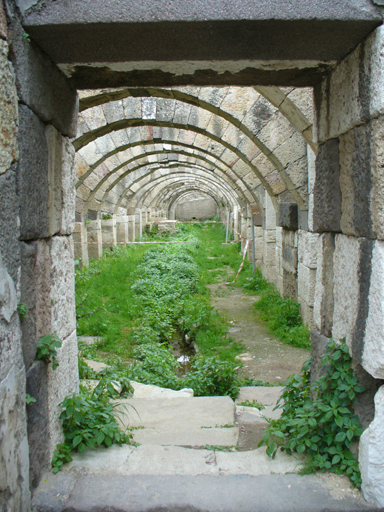
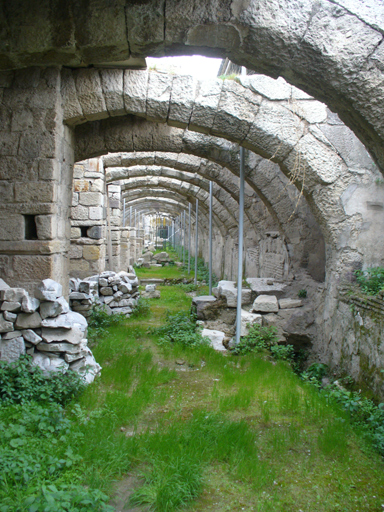
We could also see the galleries from below.
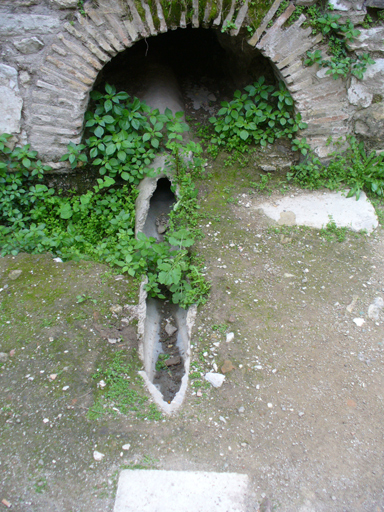 The remains of a water pipe.
The remains of a water pipe.

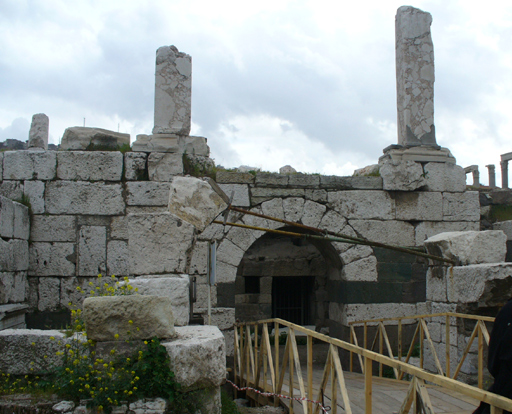 One of the old gates to the city.
One of the old gates to the city.
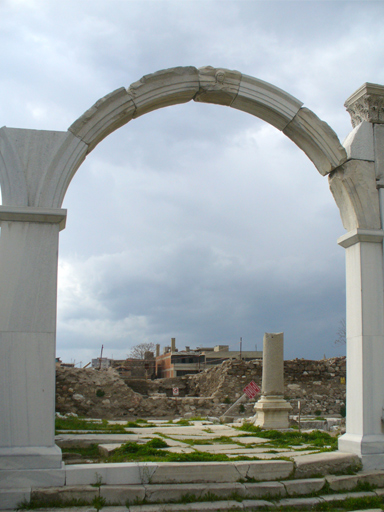 An arch in the in the west portico with a portrait carving of Faustina II, the wife of Marcus Aurelius, who rebuilt the agora after the earthquake of 178 AD.
An arch in the in the west portico with a portrait carving of Faustina II, the wife of Marcus Aurelius, who rebuilt the agora after the earthquake of 178 AD.
 A closeup of this portrait.
A closeup of this portrait.
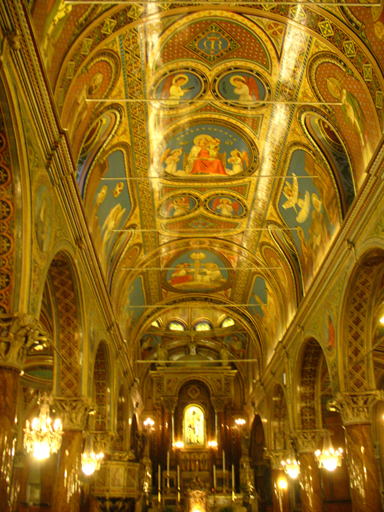 The church of St. Polycarp in Smyrna dates back to 1625 AD. It was severely damaged by several earthquakes and fires. The present church was restored in 1929 AD.
The church of St. Polycarp in Smyrna dates back to 1625 AD. It was severely damaged by several earthquakes and fires. The present church was restored in 1929 AD.
The words of St. John to the first small group of Christians, "Only be faithful till death, and I will give you the crown of life"(Rev 2:10-11) must have been recalled by those who witnessed the martyrdom of St. Polycarp the Bishop of Smyrna, in 155 AD. He was brought to the arena and ordered to deny his faith. He refused saying, "Eighty and six years have I served Him and He has done me no ill; how then can I blaspheme my King who has served me?" He was then placed on a pyre and was burned to death.
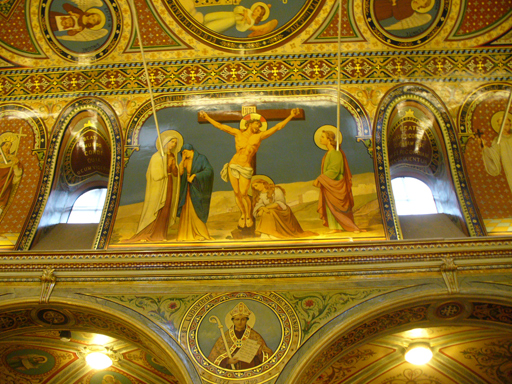 The icons on the ceiling are spectacular.
The icons on the ceiling are spectacular.
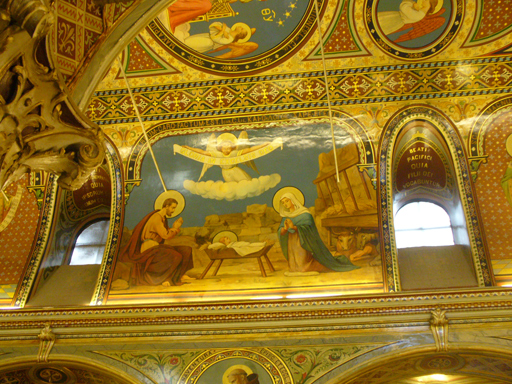
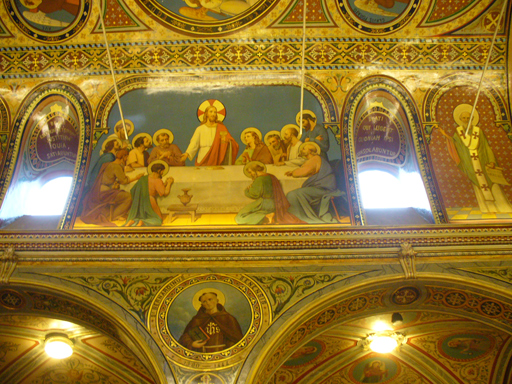
Our next stop is Pergamum.
